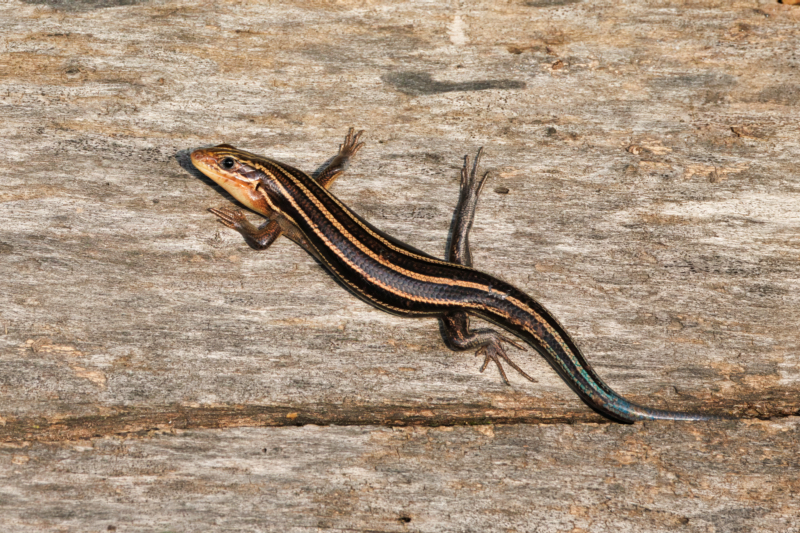As a wildlife photographer, one of the most fascinating aspects of my hobby is capturing the hidden moments in the lives of the creatures I encounter. In this blog post, I’ll take you on a journey into the hibernation habits of the Five-lined Skink (Plestiodon fasciatus) and share my experiences photographing these elusive reptiles as they prepare for and emerge from their winter slumber.

Understanding Five-lined Skink Hibernation:
The Five-lined Skink, with its distinctive five light stripes running down its sleek body, is a small lizard native to various regions in North America. While they are active during the warm months, they have a remarkable hibernation period that typically occurs from late fall to early spring.
Before Hibernation:
My quest to capture the Five-lined Skinks in their pre-hibernation state begins in the late summer and early autumn. During this time, these lizards are still active, basking in the sun, foraging for insects, and engaging in their daily routines. It’s crucial to observe their behavior during this period to gauge when they will begin their hibernation preparations.
Signs of Pre-hibernation Behavior:
- Reduced Activity: As the temperatures start to drop, Five-lined Skinks become less active. You might notice them spending more time in basking spots or seeking shelter in crevices.
- Increased Feeding: In preparation for the long hibernation period, skinks often intensify their feeding, trying to build up energy reserves.
- Seeking Shelter: Look for signs of skinks scouting out potential hibernation sites. These could be burrows, tree hollows, or rock crevices.
Photographing Pre-hibernation Skinks:
Capturing these skinks before they enter hibernation requires patience and a keen eye. Setting up near their favored basking spots or along their foraging routes can increase your chances of spotting them. Use a telephoto lens to maintain a comfortable distance and avoid disturbing their natural behavior.

Hibernation Period:
Once the temperatures drop significantly, usually in late fall or early winter, the Five-lined Skinks begin their hibernation. During this time, their metabolic rate decreases dramatically, allowing them to conserve energy.
Emergence from Hibernation:
As spring approaches and temperatures begin to rise, the skinks gradually emerge from their hibernation sites. This is an exciting time for photographers, as you can capture their emergence and witness their reentry into the active world.
Photographing Emerging Skinks:
Position yourself near their hibernation sites during the early spring months. As the weather warms, the skinks will become more active and visible. Be patient and ready to capture their first moments in the sunlight after months of dormancy.

Conclusion:
Photographing the hibernation and emergence of Five-lined Skinks is a rewarding experience for wildlife photographers. It allows us to document a unique aspect of their life cycle and contributes to our understanding of their behavior. Remember to approach these creatures with care and respect for their natural habitat, ensuring that your photography does not disturb their delicate balance during these crucial phases of their lives.
Steve Creek, Wildlife Photographer
